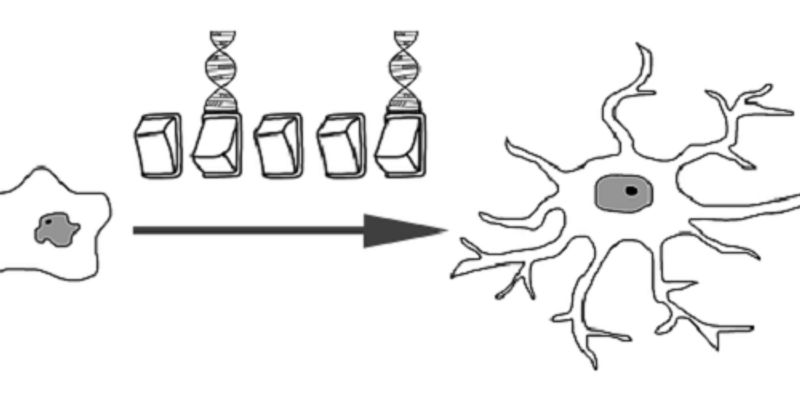Transcription Factors
Transcription Factors: In molecular biology, a transcription factor is a protein that controls the rate of transcription of genetic information from DNA to messenger RNA, by binding to a specific DNA sequence.
-
SEP 03, 2020 | 9:00 AMDATE: September 3, 2020 TIME: 09:00am PT, 12:00pm ET xxx Learning Objectives: xxx Webinars will be available for unlimited on-demand viewing after live event. LabRoots is approved as a provi...COVID 19 has resulted in diverse research needs ranging from mechanism and impact of the disease, to solutions to identify, combat or treat the disease. Cellular technologies such as flow an...Speaker: Haley R. Pugsley, PhD , Kamala Tyagarajan, PhD
Although much is known about the molecular maternal-fetal interactions during implantation, the 3D architecture of the uterine environment in which the early embryo develops is not well unde...
We applied CITE-Seq to measure >150 cell surface immune markers and checkpoint proteins simultaneous to RNA-Sequencing. We resolve the tumour-immune milieu with high precision and reveal...
Background and aim: Multiplexing of biomarker panels by microsphere-based technologies are robust and cost-effective methods. The QuantiGene™ Plex Assay (ThermoFisher Scientific) platf...
Learning Objectives: 1. What is wrong with healthcare today 2. What kinds of omics and wearables data can be used to best predict disease risk and manage health...
DEC 04, 2019 | 7:00 AM
DATE: December 4, 2019TIME: 7:00am PST, 10:00am EST, 4:00pm CET Do you know how it feels when you just quickly want to redo an experiment that your colleague did, or an experim...
NOV 19, 2019 | 10:00 AM
DATE: November 19, 2019TIME: 10:00am PSTMicroglial cells are the resident innate immune cells of the central nervous system (CNS) and are responsible for regulating inflammatory activati...
NOV 18, 2019 | 7:00 AM
DATE: November 18, 2019TIME: 7:00am PST, 11:00am EST, 4:00pm CEWT How often do you pipette in your cell culture lab every day? Usually, we do it so often that we tend stop th...
OCT 30, 2019 | 7:00 AM
DATE: October 30, 2019TIME: 7:00am PDTJoin us for a webinar to learn how to apply single cell methods to study cancer. Dr. William Greenleaf, Associate Professor from Stanford Universit...
SEP 05, 2019 | 7:00 AM
DATE: September 5, 2019TIME: 7:00am PT, 10:00am ET, 4:00pm CEST PCR (Polymerase Chain Reaction) has gone through a massive evolution since its development in 1983. Besides it...
JUN 05, 2019 | 5:00 PM
DATE: June 5, 2019TIME: 8:00am PDT, 11:00am EDT, 5:00pm CEST Eukaryotic cell cultures respond to the most subtle influence. Apart from the risk of contamination, minimal chan...
MAY 23, 2019 | 9:00 AM
DATE: May 23, 2019TIME: 9:00am PDT, 12:00pm EDT Although mesenchymal stem/stromal cells (MSCs) chondrogenic differentiation has been thoroughly investigated...
MAY 16, 2019 | 4:00 PM
DATE: May 16, 2019TIME: 7:00am PDT, 10:00am EDT, 4:00pm CEST The emergence of NGS is revolutionizing the microbiological sciences and transforming medicine. Deep sequencing has...
Whole food plant-based diets and medical cannabis have shared and continues to share similar levels of scrutiny, doubt, and stigma by the traditional medical community. One reason for the med...
DEC 13, 2018 | 9:00 AM
DATE: December 13 15,2018TIME: 09:00am PST, 12:00pm EST Breast cancers are classified into three main subtypes according to their receptor status: estrogen receptor-positive...
As the most common female malignancy, breast cancer is the most likely reason that a woman will die of cancer around the world. Breast cancer mortality has dropped in the U.S. by 35% since 19...
Speaker:
Benjamin Anderson, MD
Lung cancer is the leading cause of cancer-related mortality worldwide. Large-scale sequencing studies have revealed the complex genomic landscape of NSCLC and genomic differences between lun...
Speaker:
Nicholas McGranahan, PhD
























